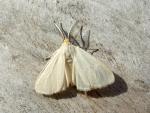« |
Home |  » » |
| View PDF | Erebidae Members: | Neoplynes Members: | 15 NC Records |
|---|
Neoplynes eudora (Dyar, 1894) - No Common Name |
 |
Photo Gallery for Neoplynes eudora - None | Photos: 5 |
| Moths of North Carolina |
« |
Home |  » » |
| View PDF | Erebidae Members: | Neoplynes Members: | 15 NC Records |
|---|
Neoplynes eudora (Dyar, 1894) - No Common Name |
 |
Photo Gallery for Neoplynes eudora - None | Photos: 5 |